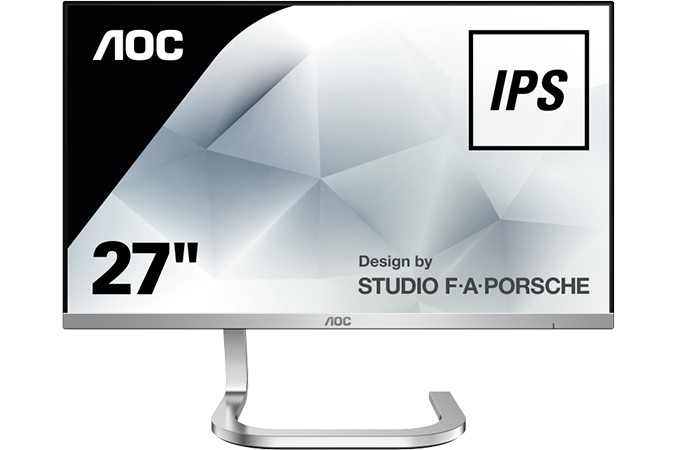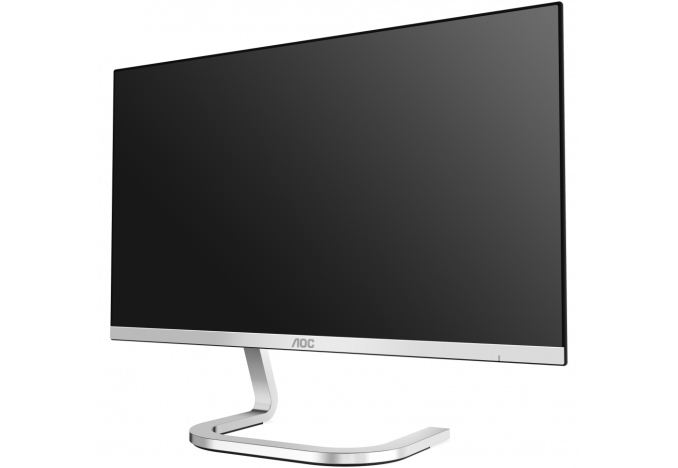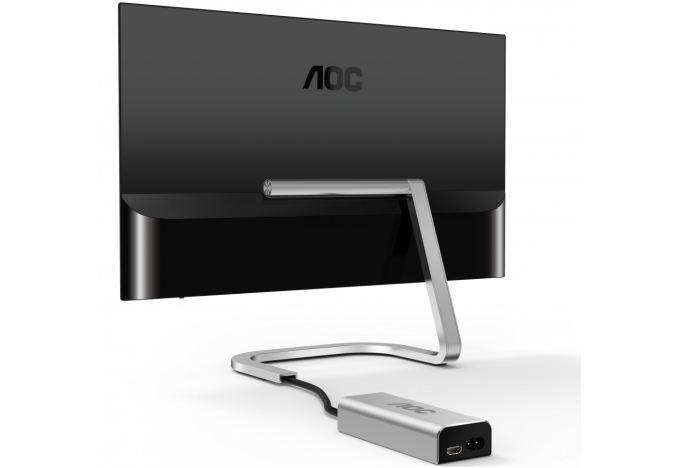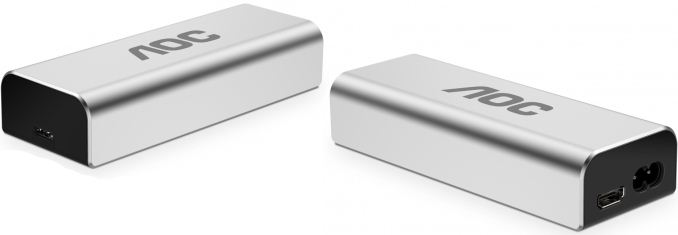AOC Teams Up with Porsche Design for PDS241 and PDS271 Displays
by Anton Shilov on July 8, 2017 9:00 AM EST
AOC this week introduced two new displays that it co-developed with the Austrian arm of the Porsche Design Group. The PDS241 and PDS271 feature IPS panels with FHD resolution, but their main feature is visual aesthetics with a design that attempts to hide power and signal cables.
While things like resolution, color gamut and refresh rate matter a lot, the visual design remains very important in for various business environments. The new AOC PDS family of displays is an example of the design-first approach. When developing the PDS-series monitors, AOC claims to have attempted to achieve three goals: first, to build visually attractive devices; second, to hide their cables inside their stands; third, to ensure relative affordability without using cheap components and compromising user experience.
The AOC PDS-series displays feature asymmetric metal stands that integrate their power and signal cables, creating the impression of ‘cable-less’ monitors. The displays use custom PSUs that not only deliver power, but also feature an HDMI input. In fact, in order to make the PSUs small in general, and avoid using thick power cables, AOC had to use LCD panels and backlighting with lowered power consumption and slightly reduced brightness versus mainstream desktop screens. This also contributes to the reduced thickness of the panel itself.
Speaking of panels and general specs, the PDS241 and the PDS271 are based on 23.8” and 27” AH-IPS panels featuring a 1980×1080 resolution, 250 nits brightness, a 1000:1 contrast ratio, viewing angles of 178°, and so on. The displays claim to cover 100% of sRGB and 90% of NTSC color gamut. As for input, both monitors only have an HDMI connector due to space constraints, located in the power supply. Power consumption of both displays ls listed as not exceeding 25 W.
Two thing to notes about the PSU: it is very small, but it also uses a USB Type-C connector to the display to carrying both signal and power.
| AOC PDS-Series Displays | |||
| PDS241 | PDS271 | ||
| Panel | 23.8" AH-IPS | 27" AH-IPS | |
| Native Resolution | 1920 × 1080 | ||
| Maximum Refresh Rate | 60 Hz | ||
| Response Time | 4 ms (gray-to-gray) | ||
| Brightness | 250 cd/m² | ||
| Contrast | 1000:1 | ||
| Viewing Angles | 178°/178° horizontal/vertical | ||
| Color Gamut | 100% sRGB, 90% NTSC | ||
| Pixel Pitch | 0.2745 × 0.2745 mm | 0.311×0.311 mm | |
| PPI | 92.56 | 81.59 | |
| Inputs | 1 × HDMI | ||
| Audio | 3.5-mm headphone jack | ||
| Color | Silver | ||
| Power Consumption | Standby | < 0.5 W | |
| Maximum | 25 W | ||
| Additional Information | Link | Link | |
| Price | $199 | $249 | |
AOC’s PDS241 and PDS271 displays are already available in the U.S. from Amazon for $199 and $249, respectively.
Related Reading
Source: AOC



















20 Comments
View All Comments
Bullwinkle J Moose - Saturday, July 8, 2017 - link
Those are some SERIOUSLY Ugly MonitorsNot Fake New!
R0H1T - Saturday, July 8, 2017 - link
Don't you mean Fake News?ddriver - Monday, July 10, 2017 - link
The monitor itself isn't bad, nice thin bezels. But the stand is simply puke-a-tronic.Spunjji - Monday, July 10, 2017 - link
Porsche design in IT has been awful for years. I have no idea why it's still considered some sort of benchmark.MikhailT - Saturday, July 8, 2017 - link
Why do they keep using Porsche Design? I've never seen any good designs from them and these monitors aren't great looking either.Sivar - Saturday, July 8, 2017 - link
By integrating the power supply with the video cable rather than keeping them separate, the monitor will become useless when the power supply dies.AOC may sell spares for some time, but will likely charge quite a lot for them.
alin - Sunday, July 9, 2017 - link
It's a power supply people. You can replace it anytime with another one. Doesn't need to be AOC. Any DIY electrician/electronist can replace it. Not a deal breaker.edzieba - Sunday, July 9, 2017 - link
It might be worth you actually looking at the photos in the article. The PSU is integrated into the same device that MUXes external video inputs into the single lead tethered to the monitor, and almost certainly on the same PCB. Dead PSU = dead controller box.ddriver - Monday, July 10, 2017 - link
Which is a dick move, considering that there is plenty of space in the bottom bulge of the monitor.DanNeely - Saturday, July 8, 2017 - link
I'm generally not a fan of non-adjustable stands anywhere except the race to the bottom market segment; but routing the cables out the bottom at least tries to make a virtue out of the vice.